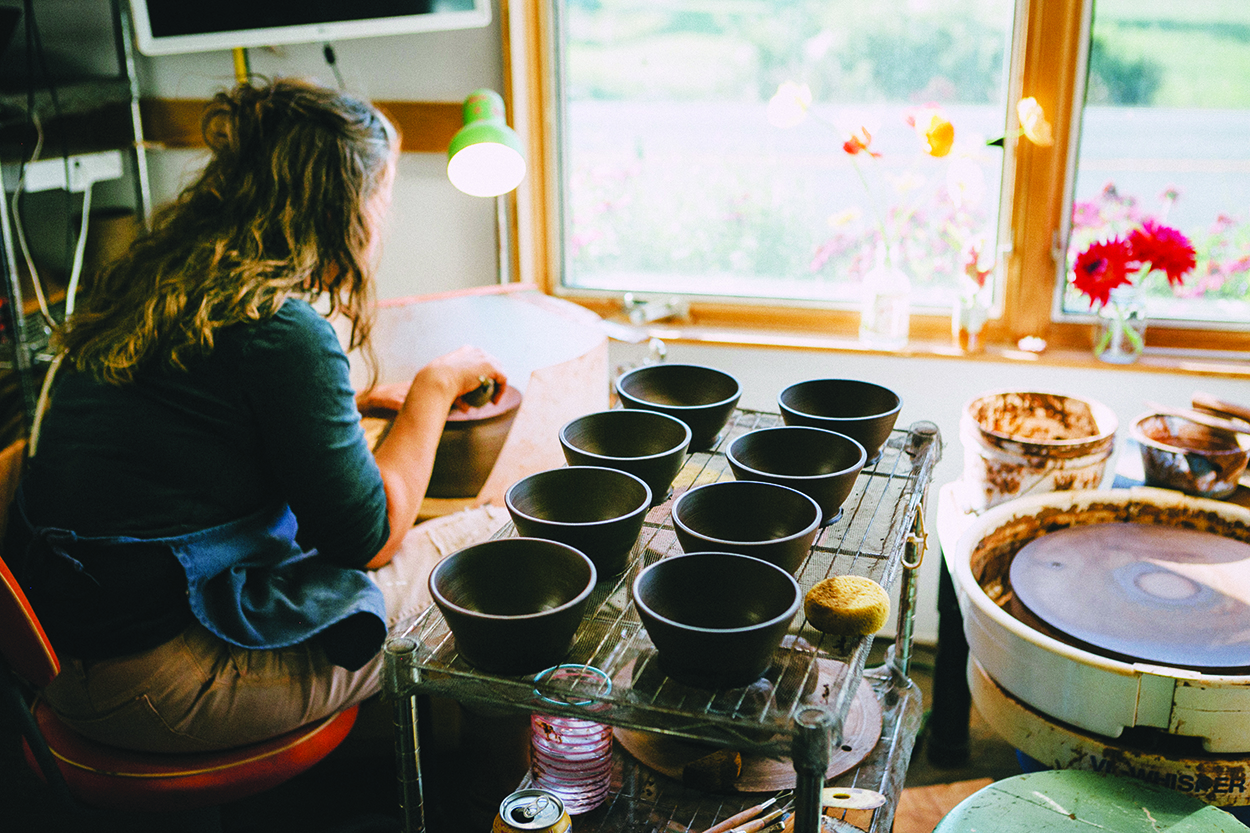By Marcy Stamper
Photography by Sol Gutierrez
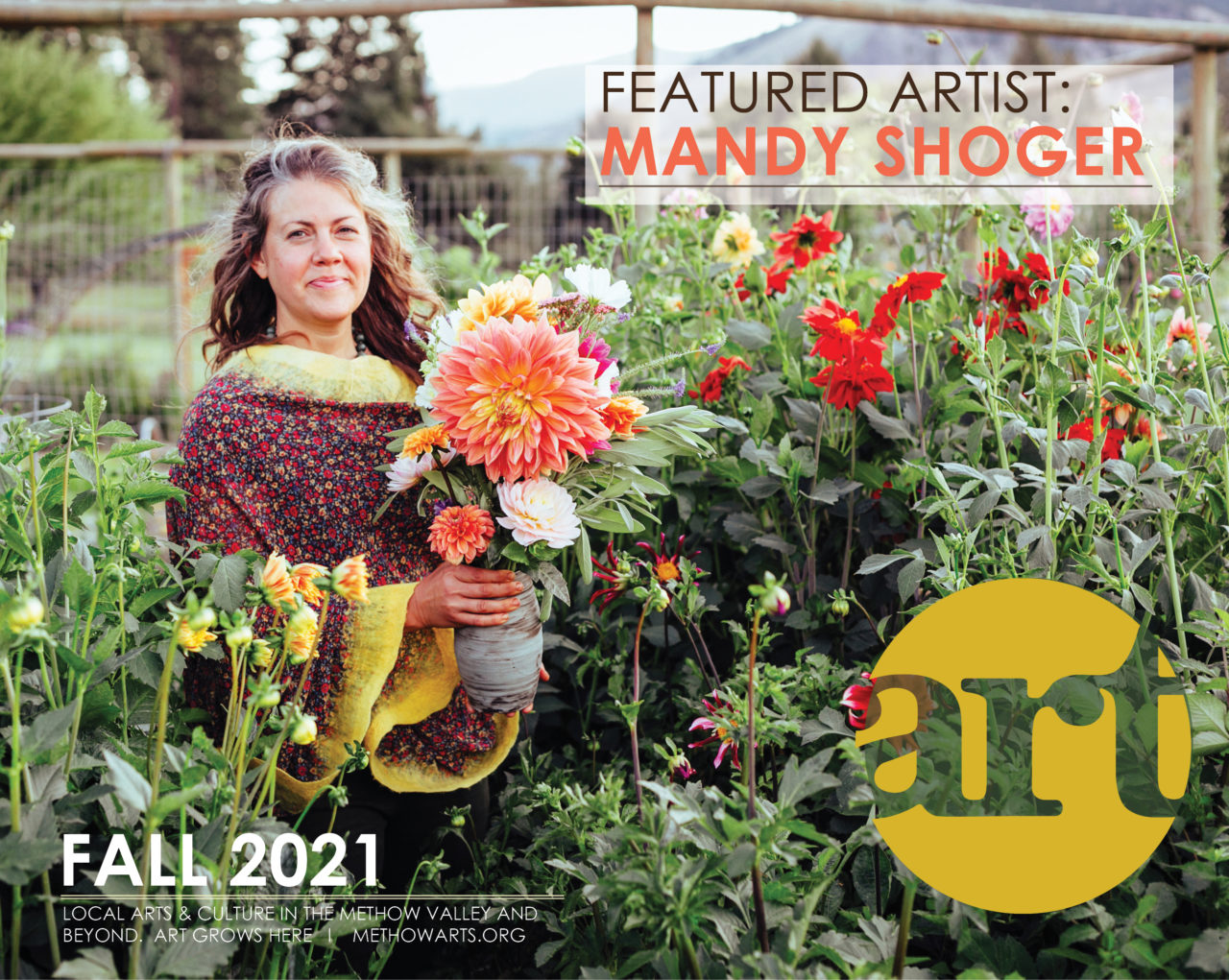
It’s a rare privilege to be able to literally shape mountains into art. That’s how Mandy Shoger of Foxtail Pottery relates to her work.
“I’m addicted to clay. There’s a magical feel about clay – it’s basically mountains beaten down by the years,” she said.
Part of that obsession grows out of the limitless possibilities for shaping clay into different forms, from graceful to chunky to sculpturally eccentric. But there’s also simply the way clay feels.
Clay has a unique plasticity that enables it to be shaped with the hands. “Once you start feeling that, it’s really magical – it’s great therapy for stress,” Shoger said. “You have to be present in the moment – if you move your hands, you lose control.”
Watching a potter start with a slab of clay and then coax it into a bowl or mug on the wheel can seem magical. But clay also works its power in mental and physical ways. It teaches patience, Shoger said.
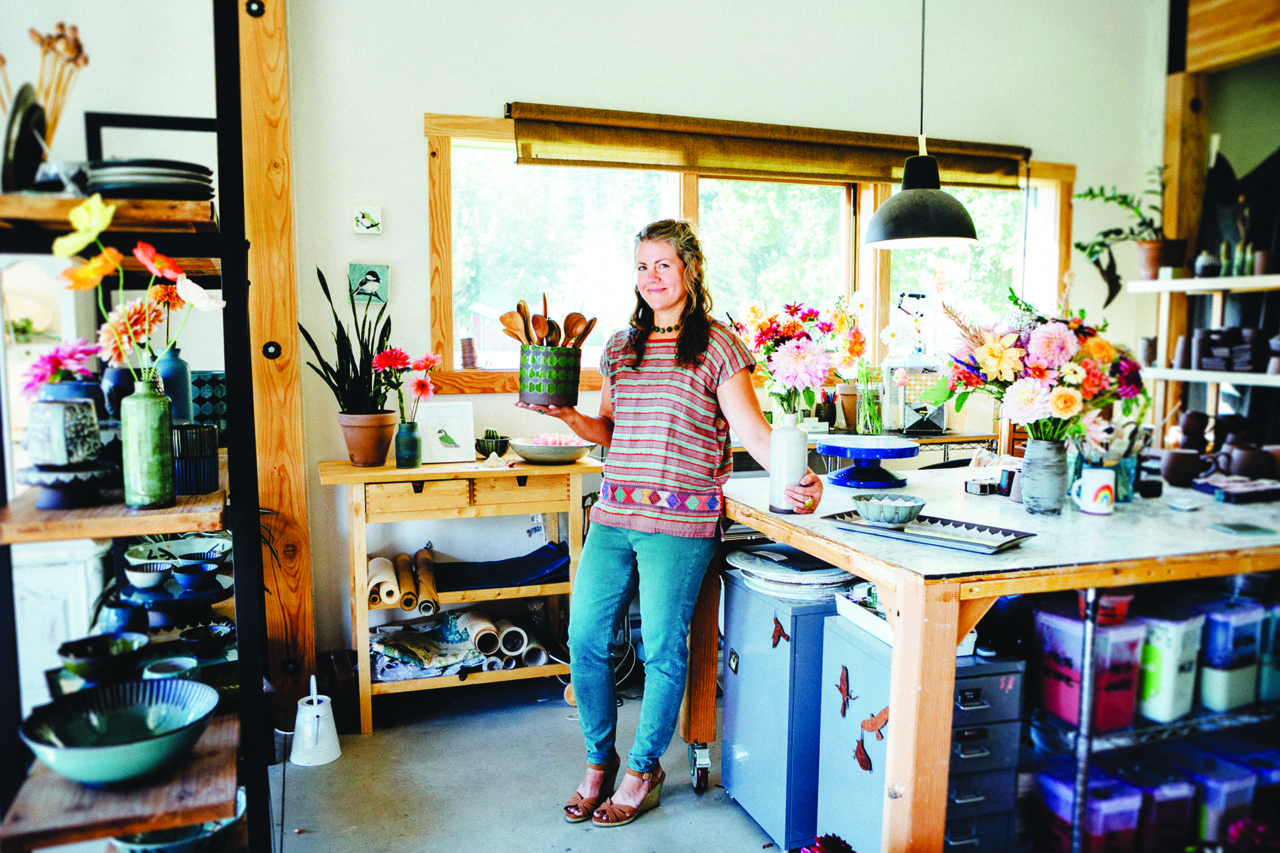
“It can be cruel – it can crack, or not work out the way you think, so you need detachment,” she said. “You can’t control clay like other mediums, because it’s so susceptible to the elements, to heat and humidity. The kiln is not always predictable, and that’s part of the magic.”
It wasn’t until relatively late in her career that Shoger dedicated herself to ceramics, although she’s always been attracted to the satisfying malleability of clay. As a child, she created little pastries out of mud, which she’d set out to dry in the sun.
In college, Shoger studied painting, focusing on portraiture (she also studied philosophy, for good measure). Although she had a chance to work with many mediums in school, she’d never really explored ceramics.
After graduation, Shoger tried to find a way to make a living as an artist. She did quick pastel portraits at arts fairs and made jewelry before getting a job as a buyer for an import gallery in Seattle that specialized in in pottery and textiles.
She would accompany the owner on trips to small towns in Mexico, where each village had its own distinctive style of pottery. The job exposed her to the rich array of crafts and how they reflect regional traditions. The artists had evolved their own technique for shaping and firing pieces based on the local clay deposits, Shoger said.
But then Shoger’s career took a turn. She wanted to do work that helped people directly and went back to school to become an X-ray technologist. She ultimately specialized in interventional radiology, where she did extremely precise work, feeding tubes and wires into blood vessels to clear blockages in the heart or brain.
“It was really fun, hands-on – and high stress,” Shoger said. Patients were often in critical condition, and it was common to be called into work in the middle of the night to do a procedure.
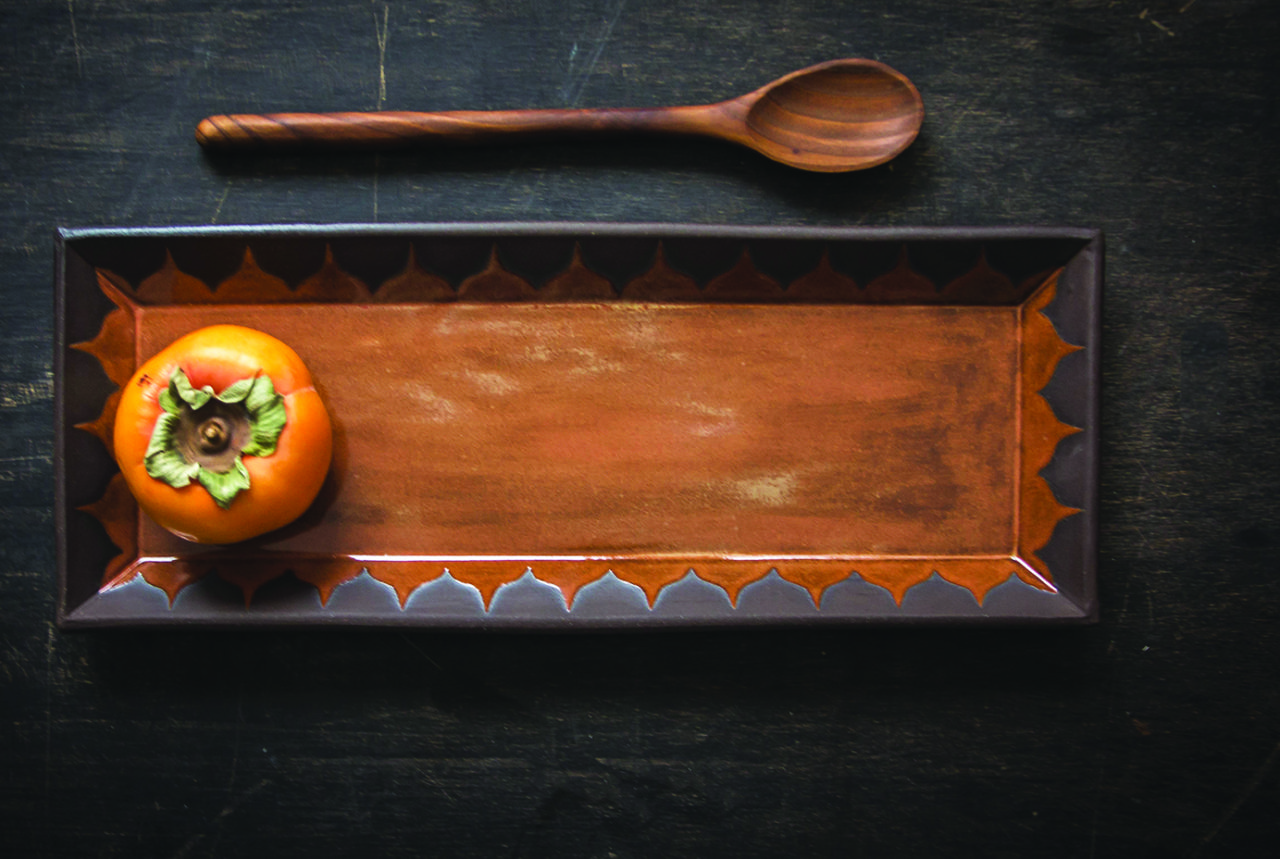
For a break from her job, Shoger took pottery classes at a community center near her home in Seattle. As she became more accomplished, she started selling mugs and other functional pottery on Etsy, and ultimately built wholesale accounts, selling to stores and galleries. Demand grew and she sold more locally and all over the country. Over several years she transitioned from full time to part-time hospital work so she could grow her business and focus more and more on clay.
After Shoger and her husband moved to the Methow Valley in 2017, she continued to work a few days a month as a cath lab and interventional radiology tech, but two years ago, she finally made the leap and committed to focusing full time on pottery.
Today, Shoger’s so busy that she can no longer serve her wholesale accounts. The bulk of her sales are at the Twisp farmers market and her retail space at TwispWorks. Shoger loves the serendipity of the market, the interactions with customers, and the different reactions to her art. “I love setting up my table and seeing who walks by,” she said.
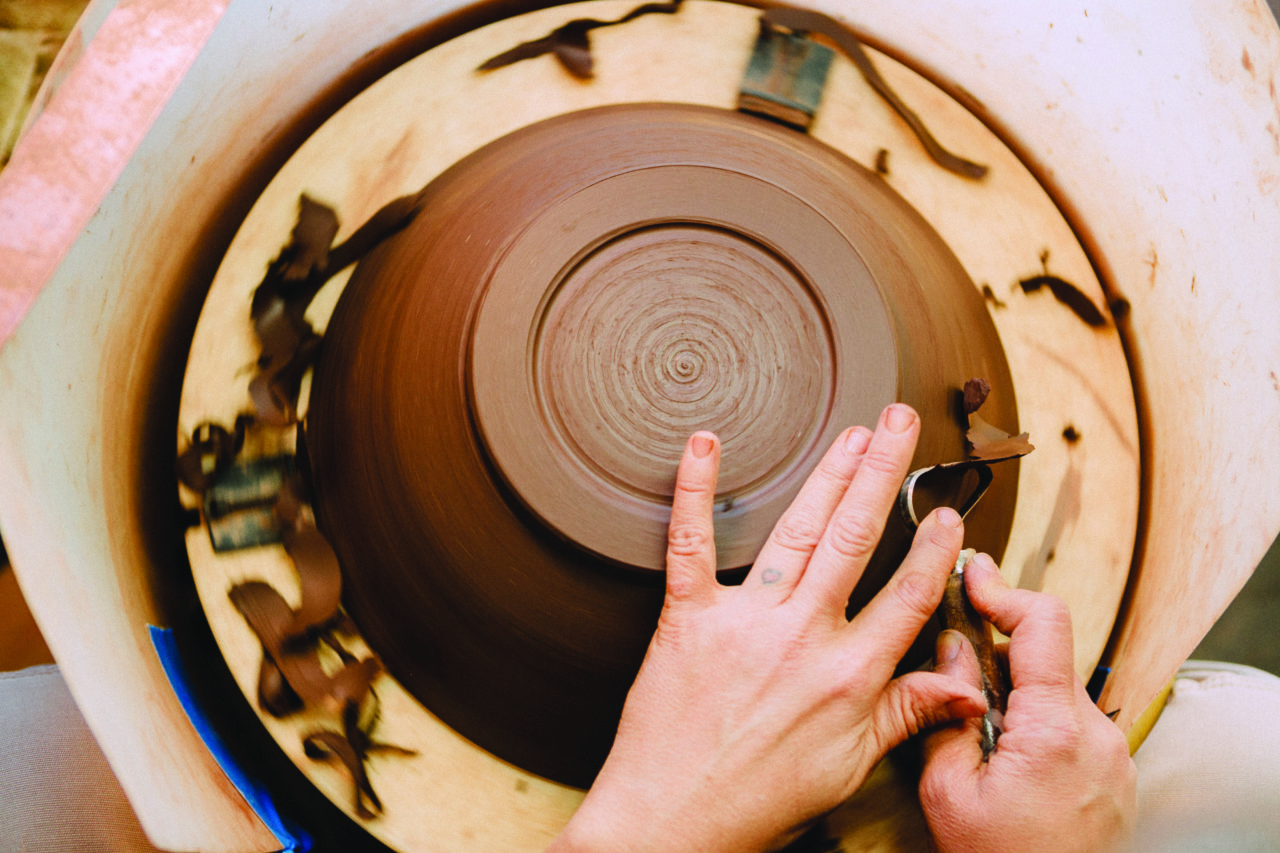
“I’m really surprised that in a tiny little town, you can be a full-time artist. There’s just such support for artists here,” she said.
Shoger’s pottery, in muted greens, blues, pinks, and off-white, is distinguished by geometric designs inspired by her extensive travels in Asia and Morocco, and by ornaments from Gothic architecture.
She uses a brown clay that takes on a warm, understated shade after firing. Her sumptuous designs feature stripes, arches, and spiral designs; riffs on flowers, buds and petals; scallops; flocks of birds, and intricate whorls. There are stout, rounded mugs; deep and shallow bowls; and gently flared vases and cake stands.
Although working with wet clay is Shoger’s favorite part of the process, she’s captivated by pattens and colors. “I feel an energy when I see certain patterns and shapes together – I feel a spark,” she said.
While she makes many lines of pottery, the colors, shapes, and overall aesthetic are cohesive. Many of Shoger’s clients collect different pieces, add to a set, or mix and match designs.
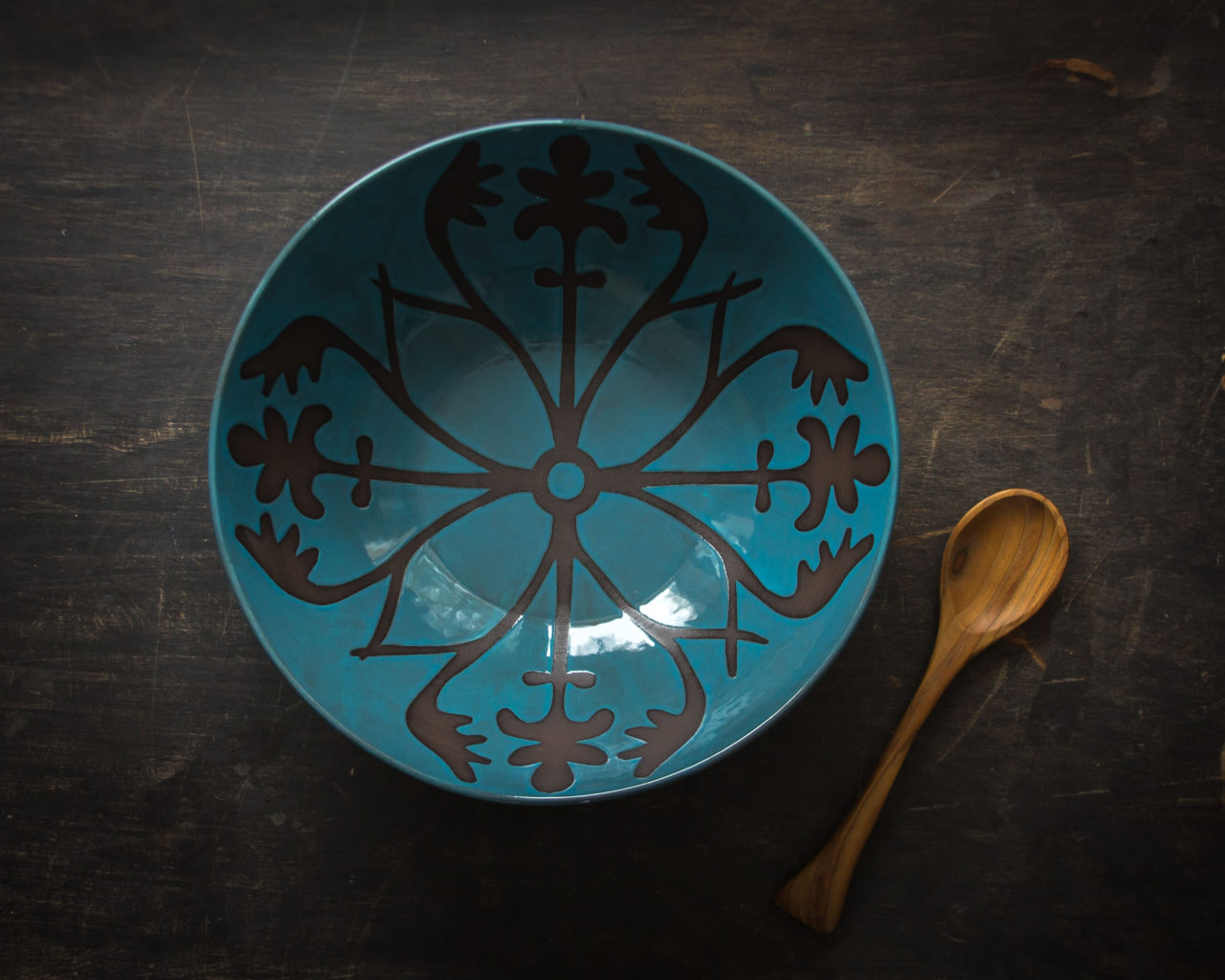
Shoger enjoys blending pottery techniques that have been used for thousands of years with modern computerized tools. She devised a technique for creating designs using stencils, something that’s rarely done in pottery. She draws her designs on paper or a computer, and then scales them to fit a mug or bowl. Using a specialized scrapbook printer, she prints a cut-out stencil on adhesive-backed vinyl, which she peels off and affixes to the clay after the initial firing. When she glazes the piece, the areas under the stencil remain unglazed.
Making functional pottery requires turning out many identical pieces, but Shoger makes so many different shapes – mugs, bowls, plates, trays – that there’s incredible variety. “The actual working with wet clay is so satisfying that even the repetitive stuff is enjoyable, because I love clay so much,” she said.
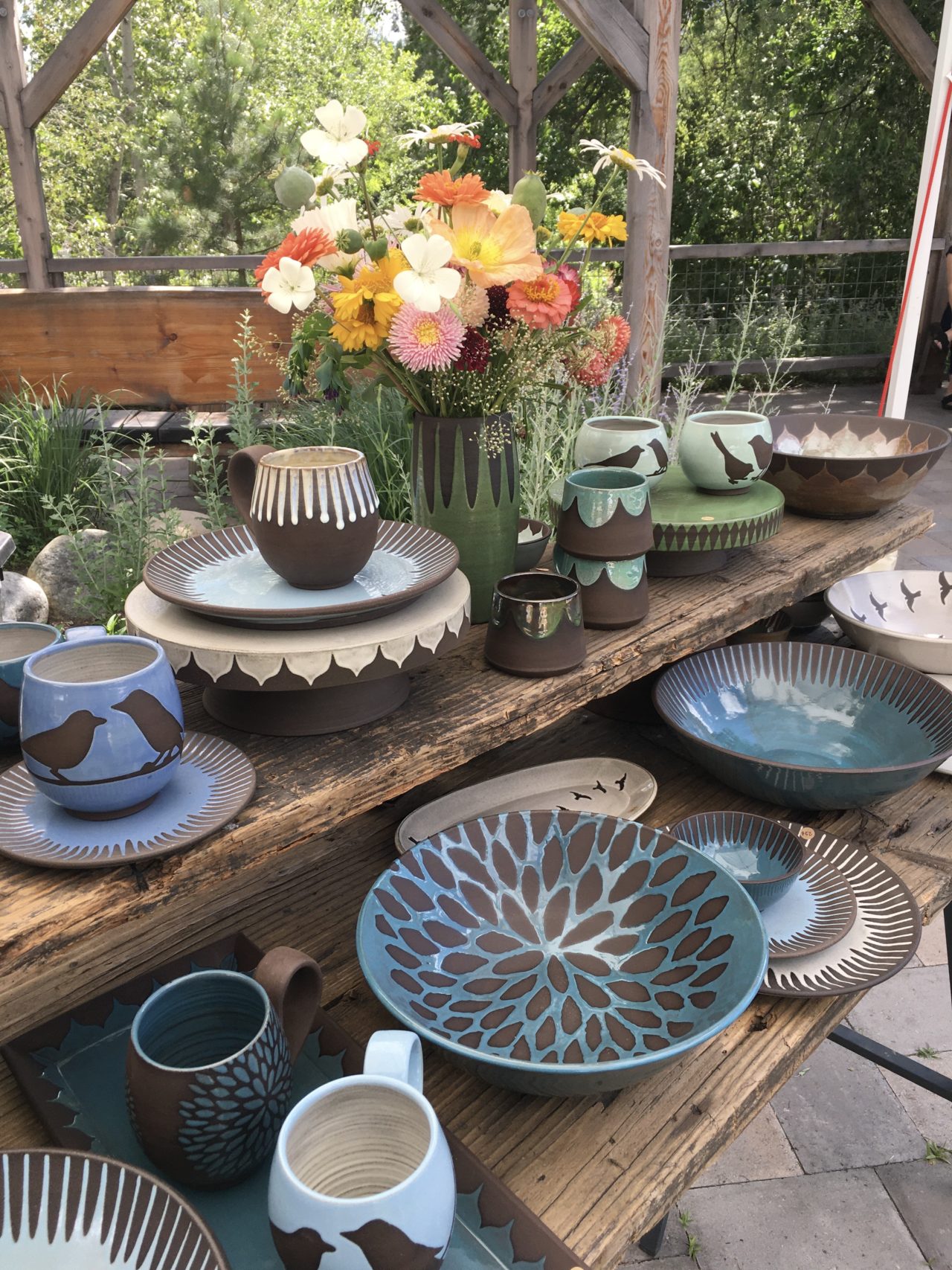
There’s also the infinite diversity achieved through glazes. Mastering glazes requires in-depth knowledge of both art and science. Shoger has been expanding her understanding through an online class in glaze chemistry, learning from glaze experiments by thousands of fellow students from around the world.
In a room in her TwispWorks studio, dozens of containers are stacked on shelves containing ordinary-looking white and brown powders – silica, magnesium, calcium, tin oxide, bentonite, talc. Just a hundredth of a gram can alter the color, sheen, or texture of a glaze.
Hundreds of glazed samples show the range of effects, from glossy opaques to translucent pastels, to surfaces flecked with bubbles or flinty specks. Different kiln temperatures also affect the outcome.
Pottery is simultaneously a connection with the past and an opening to unknown possibilities of the future. Potters still use some of the same glaze recipes used in China, Turkey, and Japan thousands of years ago, she said.
Shoger always has a project going, whether it’s ceramics or another hands-on pursuit. Her passion for working with the earth also extends to gardening, which connects her directly to the earth in a therapeutic way, much like clay. This summer, she’s growing 140 dahlias.
“Plants surprise me every day,” she said. She’d like to create floral arrangements with ceramic vessels specifically designed to complement the arrangement. She plans to keep studying the science of growing flowers and the art of creating floral installations, with the hope of weaving her love of clay and flowers together in a way that can bring joy to others.
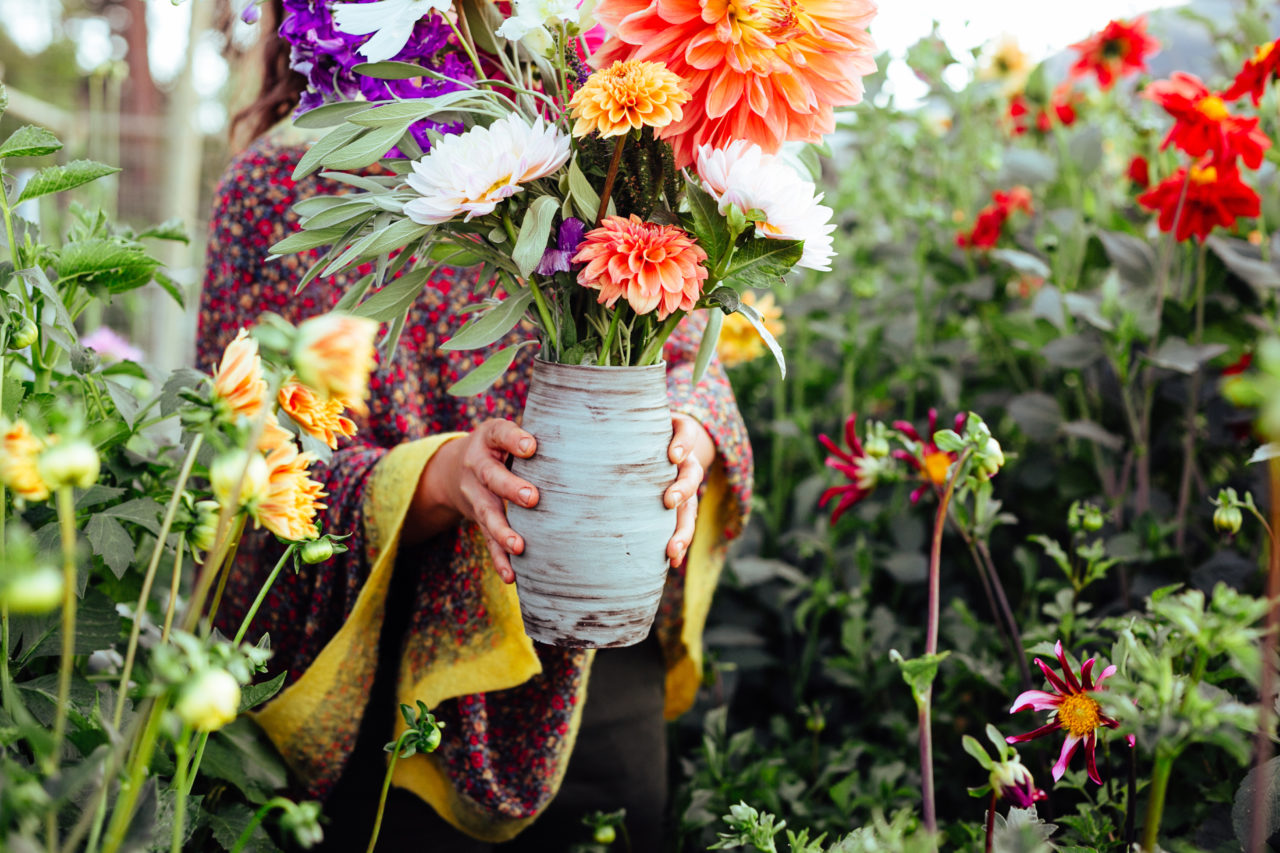
Working with clay and devising new designs are immensely satisfying on their own, but it’s the way pottery links her to the world – to the earth and to cultures over the long span of time – that is especially satisfying.
“To think that this came out of the earth, from a mountain, and I formed it with my hands. And then a person will use it during their day for coffee – it’s such a special connection with other humans, a way to communicate without words,” Shoger said.
Find Mandy Shoger in her studio, Foxtail Pottery, at TwispWorks. View her Methow Arts Artist Profile here. Email her: foxtailpottery@gmail.com.

